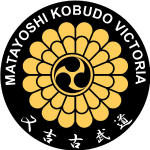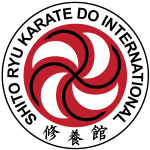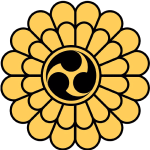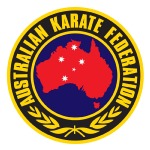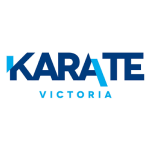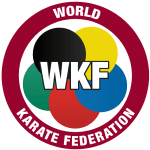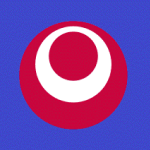OUR HISTORY
KARATE

SHORT HISTORY
Karate’s nitial formation was within the RyuKyu Kingdom (chain of islands south of Japan with the biggest island being Okinawa). It was initially known as “Te” (hand) and was was a combination of Chinese Kungfu (primarily White Crane), various Japanese martial arts.
The 3 major townships of Okinawa developed their own stylish forms
- Shuri – strong straight line linear movements
- Naha – concentrating on dynamic internal breathing and circular techniques
- Tomari – a combination of the above.
Modern day karate styles have evolved from one or more of the masters teaching in these towns. “Te” eventually migrated over to mainland Japan from Okinawa via 3 masters and good friends, Kenwa Mabuni, Chojon Miyagi and Gichin Funakoshi. It was here in on the mainland that the name was changed to “Karate” (Empty Hand) to make it more Japanese.

DOMINIC SCULLI (1965 – present)
Chief Instructor of Shito-Ryu Karate-Do International, began training in 1983 in the art of Shito-Ryu Shuyoukan. He has traveled overseas, interstate and actively competed in tournaments throughout the 1980s. He has trained in Japan under the guidance of Shihan Yoneda, and around the world (in the arts of Jujitsu, Judo, Grappling and Boxing).
Shihan Dominic began teaching Karate in 1990 whilst still pursuing the technical aspects of Karate and Martial Arts. He is recognised as a Karate Referee “A” with the World Karate Federation.
Essentially Shihan Dominic Sculli is a complete martial artist and a modern day master.
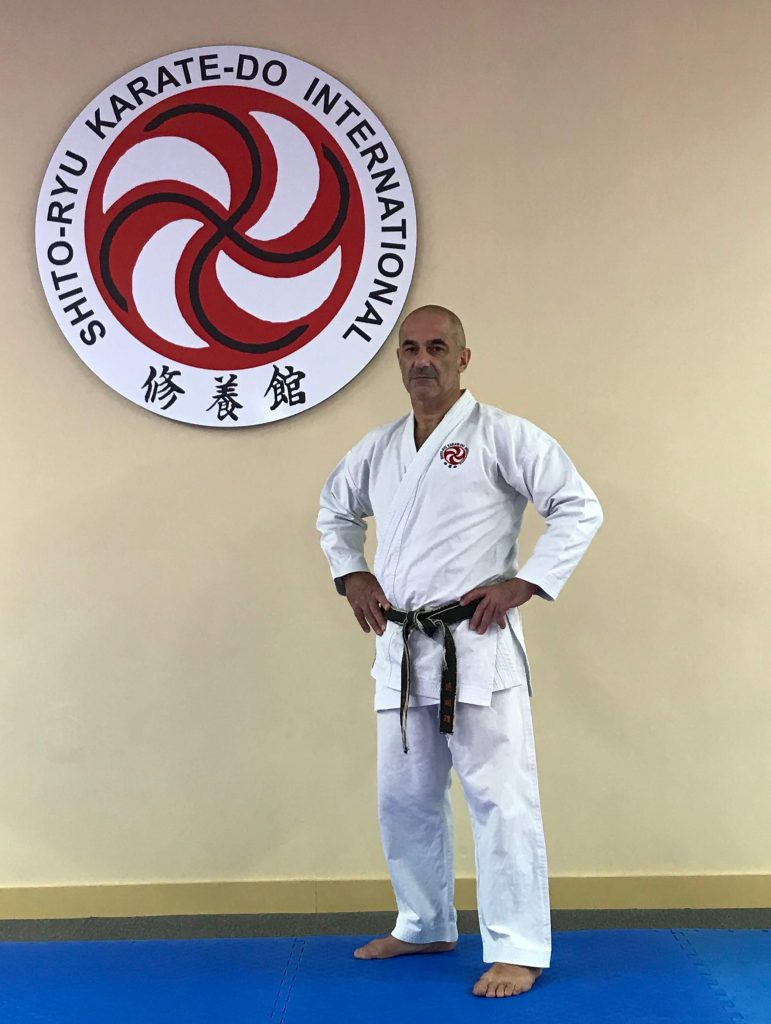
DOMINIC SCULLI
Shito-Ryu Karate-Do
CREDENTIALS
- Chief Instructor of Shito-Ryu Karate-Do International
- 8th Dan Blackbelt, Shito-Ryu Karate-Do Shuyoukan
- 8th Dan, Australian Karate Federation
- 2nd Dan Matayoshi Kobudo
- Awarded Certificate of Title to SHIHAN by Soke Yoneda
- World Karate Official – Kata Judge “A” / Kumite Referee “A”
- Member of the Australian Karate Federation National Referee Commission
TSUTOMU YONEDA (1934 – present)
Sensei Yoneda started his training in 1949 under Sensei Kenwa Mabuni, and then after his death in 1952, continued training under both of his sons, Sensei Kenei Mabuni & Sensei Kenzo Mabuni.
In 1965, he was graded to 7th Dan under the authorisation of Nippon Den Shito-Ry Karate-Do Soke. Then in 1972 started studying Goju-Ryu Karate-Do under Sensei Kisaki Tomoharu (deceased) who was the president of Goju-Ryu Karate-Do Yuishinkan.
In 1979, he was graded to 7th Dan under the authorisation of All Japan Collegiate Karate Federation & then by the Japan Karate-Do Federation. Then in 1993 graded to 8th Dan by the Nippon Den Shito-Ryu Karate-Do Soke.
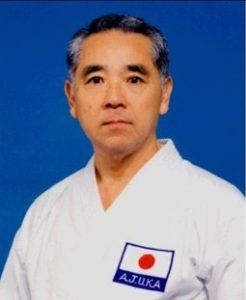
TSUTOMU YONEDA
Shito-Ryu Karate-Do
CREDENTIALS
- Head Instructor Shito-Ryu Karate-Do Shuyoukan
- Councilor at Kansai Collegiate Karate Federation Competition Supervisor at Kansai
- Collegiate Karate Federation Grading Examiner at Kansai Collegiate Karate Federation
- Consultant to Kobushi Kai, a society of Kinki University Karate-Do Club members
- Chairman/Shihan at Nippon Den Kenpo Shito-Ryu Karate-Do Shuyoukan
- Chairman/Shihan at Shito-Ryu Karate-Do International (Shuyoukan) Australia
- Technical Advisor at Shito-Ryu Karate-Do Association (Singapore)
- Technical Advisor at Asian Shito-Ryu Karate-Do Federation
MABUNI FAMILY
After the death of Kenwa Mabuni, the lineage of the Shito-Ryu style was disputed between his two sons
- Kenei – Shito Kai Shito Ryu
- Kenzo – Seito Shito-Ryu
This caused a family rift where the brothers no longer spoke nor acknowledged the other side’s existence. To this day dispute has caused heated global debate between modern day practitioners. Either way, as being sons of Kenwa Mabuni, they were in touch with some of the greatest karate masters such as Chojun Miyagi, Gichin Funakoshi and Choki Motobu from childhood and both were Masters in their own right.
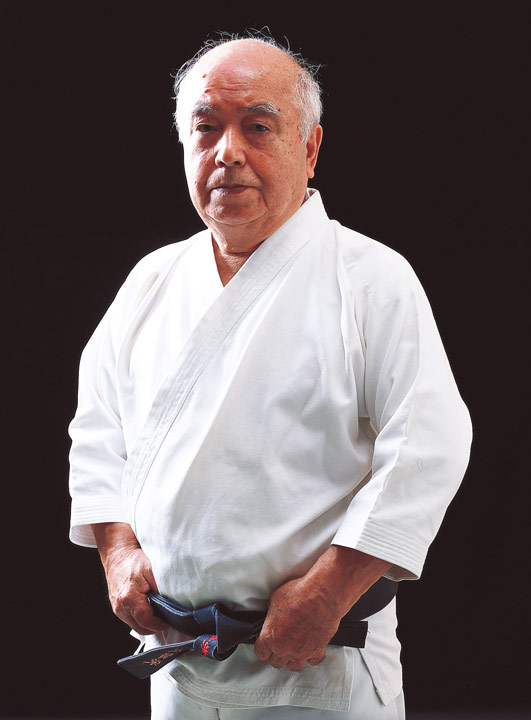
KENEI MABUNI (1918 – 2015)
Shito-Ryu Karate-Do
CREDENTIALS
Kenei Mabuni was born in Shuri, Okinawa. Besides his karate practice he also studied several other martial arts such as aikido, kendo, Okinawan Kobudo, Jujitsu and Judo. After the passing of his father co-founded and became the head of the Shito-Kai organisation. His claim to the Shito-Ryu linerage is according to Japanese tradition, the eldest son is deemed the successor and inheritor of everything his father owned, including the title of Soke.
Kenei Mabuni emphasized the importance of the spiritual contents and values of karatedo. Without generally refusing sport-oriented karate he supported a clear distinction between traditional karatedo and sport karate.
Among his achievements is the completion of the kata Shinpa (inspired by the Uechi-Ryu) that his father left uncompleted, the creation of kara Shinsei Ni and the introduction of kata Nipaipo to the world.
He is succeeded by his son Kenyu Mabuni.
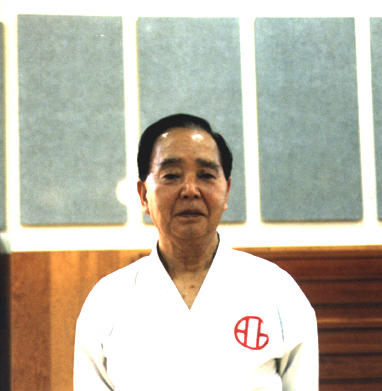
KENZO MABUNI (1927 – 2005)
Shito-Ryu Karate-Do
CREDENTIALS
Born in Shuri, Okinawa, began his Karate training at the age of 13 and had continued his training until his passing. His organisation, Nihon Karatedo Kai was founded by his father in 1939.
His claim to the Shito-Ryu linerage is that after his father’s death in 1952, his mother, Kame Mabuni, came to Kenzo Mabuni and requested that he take over the style. Hence his father left him the Shito Ryu name, his complete syllabus, and the dojo with the association name Nippon Karate Do Kai. He followed his father’s syllabus exactly the way it was written down in 1929 and that is why he called his style, “Seito Shito Ryu” or pure, true Shito Ryu.
Kenzo Mabuni devoted his life to the preservation of Shito Ryu Karate as his father had created. His organisation, Shito Ryu International Karate Do Kai, now has branches globally.
He is succeeded by his daughter Tsukasa Mabuni.
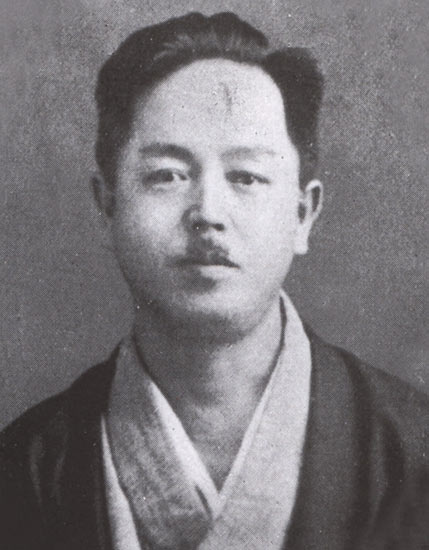
KENWA MABUNI (1889 – 1952)
Shito-Ryu Karate-Do
CREDENTIALS
Born in Shuri, Okinawa, Mabuni was a 17th generation descendant of the famous warrior Uni Ufugusuku Kenyu. Perhaps because of his weak constitution, he began his instruction in his home town in the art of Shuri-Te at the age of 13, under the tutelage of the legendary Anko Yasutsune Itosu (1831-1915). He trained diligently for several years, learning many katas from this great master.
One of his close friends, Chojun Miyagi (founder of Goju-Ryu) introduced Mabuni to another great of that period, Kanryo Higashionna, and began to learn Naha-Te under him as well. While both Itosu and Higashionna taught a ‘hard-soft’ style of Okinawan ‘Te’, their methods and emphases were quite distinct: the Itosu syllabus included straight and powerful techniques; the Higashionna syllabus, on the other hand, stressed circular motion and shorter fighting methods. Shito-ryu focuses on both hard and soft techniques to this day.
Although he remained true to the teachings of these two great masters, Mabuni sought instruction from a number of other teachers; including Seisho Aragaki, Shimboku Tawada, Jino Sueyoshi and Go-Kenki. In fact, Mabuni was legendary for his encyclopedic knowledge of kata and their bunkai applications. By the 1920s, he was regarded as the foremost authority on Okinawan kata and their history and was much sought after as a teacher by his contemporaries. As a police officer, he taught local law enforcement officers and at the behest of his teacher Itosu, began instruction in the various grammar schools in Shuri and Naha.
SHITO-RYU KARATE
By 1929, Mabuni had moved to Osaka on the mainland, to become a full-time karate instructor of a style he originally called Hanko-ryu, or ‘half-hard style’. Later Mabuni derived the name for his new style of Shito-ryu from the readings of the first Kanji character in his master’s names:
“Shi” from Higa*shi*onna.
“To” from for I*to*su
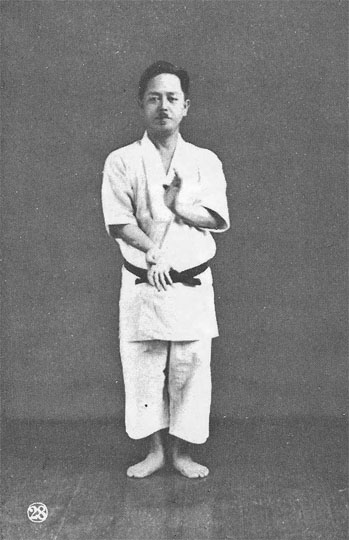
KOBUDO
Kobudo is the natural weaponry extension of karate (Empty Hand) and thus shares a similar history. The literal translation of “KOBUDO” is “Way to stop war”
- KO – Stop
- BU – War/Conflict
- DO – Way/path
The Matayoshi Kobudo system was formed by the work of two remarkable instructors, a father and son who dedicated their lives to leave us the legacy of their style. Through their system they influenced many other Kobudo schools, which are practiced today.
The most common implements include:
- Bo (Staff)
- Sai (Trident)
- Tunkwa (Tonfa / T-Baton)
- Nunchaku (Nunchucks)
- Sansetsukon (3 Sectional Staff)
- Kuwa (Garden Hoe)
- Tinbei to Rochin (Shield & Machette)
- Kama (Rice Cutter)
- Eku (Boat Oar)
- Nunti-bo (Fishing Spear)
- Suruchin (Weighted Rope)
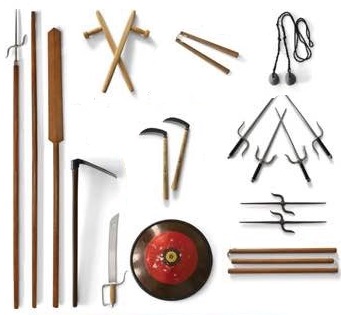
The Bo, Sai, Tonfa, Nunchaku, Sansetsukon, Suruchin, Kuwa, Tinbei and Rochin are all weapons regularly used and practiced in Chinese Kungfu. Other weapons such as the Eku, the Nunti-bo and the Kama have their origins in Okinawa.
MATAYOSHI KOBUDO VICTORIA
The MKV is an organisation of different (but similar minded) karate schools. Our dojos all come together and train as one big kobudo family to help each other expand our skills and knowledge.
Establisted in 2018, the MKV is the Victorian branch of Matayoshi Kobudo Austarlia (MKA)
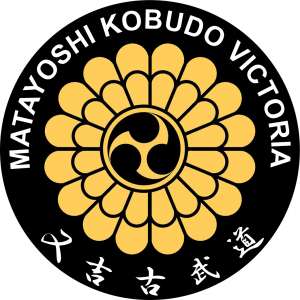
The Matayoshi Logo is based on the flower of Kiku or Chrysanthemum, which represents the Japanese Imperial Crest. Matayoshi Sensei is the only Okinawan martial artist honoured by the Emperor of Japan to use the Imperial Flower as a symbol of his organization. The inside of the logo contains the symbol Mitsu Domoe that represents the Imperial Okinawan Sho dynasty crest. Hence, the Matayoshi Kobudo logo represents the blend of the Japanese and Okinawan cultures.
ARTHUR MOULAS (1952 – present)
Has been teaching martial arts for over 40 years in Tahmoor, NSW, Australia, and is a direct student of Sensei Hidetada Ishiki.
After the passing of Shinpo Matayoshi, Sensei Arthur continued to live up to his promise to his teacher to continue to spread Matayoshi Kobudo. His kobudo organisation Matayoshi Kobudo Australia is literally an Australian wide organisation, bringing many different martial art schools together under one kobudo umbrella. In Australia, his name is synonymous with Matayoshi Kobudo.
Most importantly of all, Sensei Arthur is a true gentleman and embodies the real spirit of being both Karate-ka and Kobudo-ka.
ARTHUR MOULAS
Head of Matayoshi Kobudo Australia, Head of Uechi-Ryu Australia
CREDENTIALS
9th Dan Uechi Ryu Karate Do
6th Dan Matayoshi Kobudo
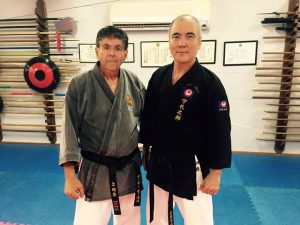
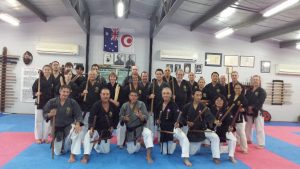
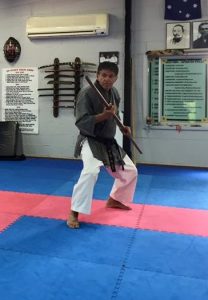
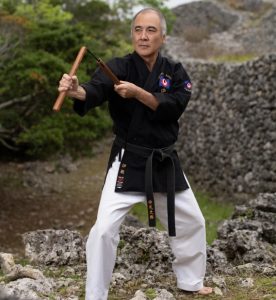
HIDETADA ISHIKI (1956 – present)
CREDENTIALS
Was born on 1st May 1956 in Okinawa. From Irei Seiki’s Uechi ryu dojo, he joined the Matayoshi Kodokan at 21 years of age, even though Sensei Shinpo Matayoshi would comment that he: “was not teaching the beginners”. After obtaining his black belt at 26 years old, Matayoshi sent him to Kina seiko in Goju Ryu.
He also joined Hideo Kadekawa to learn buyo, the ancient martial dances. With Kina Seiko and the community of Izumisaki, a district of Naha, Sensei Ishiki started a friendship which would last over 35 years to this day, culminating yearly in the parade for the Naha tug of war, where his yakusoku kumite draws attention every time.cher by his contemporaries. As a police officer, he taught local law enforcement officers and at the behest of his teacher Itosu, began instruction in the various grammar schools in Shuri and Naha.
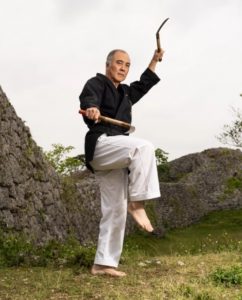
In 1992, Sensei Ishiki was awarded 5th Dan passed godan at the Kodokan in front of Miyahira Choshin, Koki Miyagi, and Shimpo Matayoshi. He was part of the delegation sent to Kyoto in 1995 to perform under the famous Butokuden, the oldest still standing dojo, at the request of the Dai Nihon Butokukai.
After the passing of Sensei Matayoshi in 1997, with his friend and early days mentor, Kenichi Yamashiro, Sensei Ishiki remained with the All Okinawa Kobudo Federation under the presidence of Miyahira Choshin, where he earned numerous tournament titles, along with his 6th and 7th dan.
After training away from the spotlights for a couple of decades, he recently ranked 3rd at the World Traditional Karate Kobudo Tournament of 2018, in Naha, Okinawa. In 2019, he was awarded his 8th Dan.
SHUREI NO KUNI
He built his own dojo at age 50, and named it “Shurei No Kuni”, after the calligraphy on shureimon in Shuri castle.
His dojo’s logo is the Okinawan prefecture flag overlayed on a blue background (blue being the colour for his dojo).
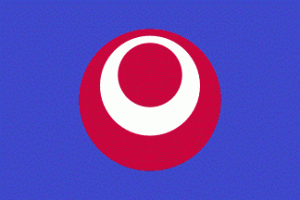
MATAYOSHI HISTORY
The Matayoshi family have long been associated with the martial arts, and they can trace their lineage back over many generations. At one time an early ancestor of Matayoshi family served as strategic martial arts instructor and as an officer of the Ryukyu royal court up until the last days of the shogunate.
SHINKO MATAYOSHI (1888 – 1947)
Was one of the best-known Masters of Okinawan Kobudo and founded Matayoshi Kobudo.
Born in Naha-shi at Senburu, he studied the bo, eku, kama and sai under the direction of Master Shokuho Agena. He later studied the tonfa and nunchaku with Master Irei. From 1911 until 1915 Matayoshi lived in Manchuria where he studied Chinese martial arts. In 1921, he gave a demonstration of his skills during Prince Hirohito’s visit to Okinawa. He later traveled to Shanghai, and returned to Okinawa around 1935 where he died in 1947.
Shinko Matayoshi was succeeded as Soke (headmaster) of Matayoshi kobudo by his son, Shinpo Matayoshi.
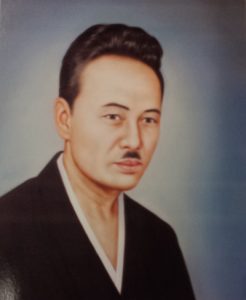
SHINPO MATAYOSHI (1921 – 1997)

Born in Naha, Okinawa and son of the legendary Okinawan martial arts master Matayoshi Shinko.
Matayoshi Shinpo learned martial arts from his father from his birth until his mid twenties. He had learned several katas associated with Naha-Te in his early childhood. Despite being a well-respected expert in Okinawan Karate, Matayoshi Shinpo is perhaps best known for his practice of Kobudo.
He started a dojo in the 1960s in memory of his father and called it the Kodokan. From the Kodokan he began to teach a wide variety of traditional weapons associated with Okinawa.
Matayoshi Shinpo continued to learn martial arts from a man known in Okinawa as Go Ken Ki (Wu Xian Gui). Go Ken Ki was from the Chinese mainland and practiced various styles of southern kung fu. It is from Go Ken Ki that Matayoshi Shinpo learned many of the Chinese forms that he later became famous for demonstrating.
Many of the weapons used in Matayoshi Kobudo have their origin in China. The Bo, Sai, Tonfa, Nunchaku, Sansetsukon, Suruchin, Hoe, Tinbei and Rochin are all weapons regularly used and practiced in Chinese Kungfu. Other weapons such as the Eku, the Nunti-bo and the Kama have their origins in Okinawa.
Students of Matayoshi Shinpo are now found all over the world, and they continue to practice his style of Kobudo known collectively as “Matayoshi Kobudo”. Some of his more respected later students include Ishiki Yoneda.
It was the ambition of Matayoshi Shinpo that his art of Kobudo should be practiced all over the world and to that end he traveled extensively teaching his art. Today there are dojos worldwide that practice Matayoshi Kobudo thanks to his legacy.
AFFILIATIONS
- Shito-Ryu Karate-Do International, Shuyoukan
- Nippon Den Kenpo Shito-Ryu Karate-Do Shuyoukan
- World Karate Federation
- Australian Karate Federation
- Victorian Karate Federation
- Matayoshi Kobudo Australia
- Matayoshi Kobudo Victoria (founding member)
- Okinawa Kobudo Shureinokuni
